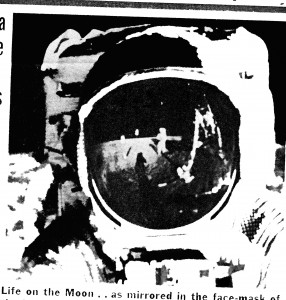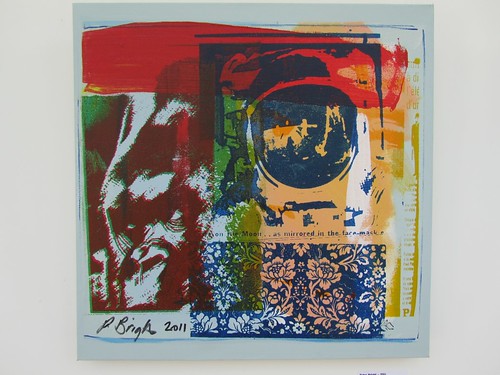£51.12
Original painting by Peter Bright.Media: Painting and Screen Print on canvas, signed and dated 2011.Size: 400mm x 400mmBuy here
ARTIST + S T A T E M E N T …
Guy the Gorilla (May 30, 1946 – 1978) was a
Western Lowland Gorilla (
Gorilla gorilla gorilla) which was
London Zoo‘s famous resident, something of a celebrity in the 1960s–70s and was often profiled on kids TV shows and natural history productions. Guy the Gorilla was one of London Zoo’s best-loved animals.He arrived at the zoo on 5 November 1947, Guy Fawkes Night, hence his name. He was a tiny baby, weighing just 23 lb (10 kg) and holding a small tin hot-water bottle. Guy was the replacement for the zoo’s previous gorilla, Meng, who died in 1941. Guy was captured in the French Cameroons on behalf of Paris Zoo and was traded for a tiger from Calcutta Zoo. It was organized that London Zoo would have Guy. The Paris Zoo Director sent instructions to their game department in West Africa to find a suitable female to mate with him.London sent a request to a variety of animal dealers and zoos worldwide to find a mate, and in 1969 the zoo was offered Lomie, a five year old female who had been living in nearby Chessington Zoo. She lived in the old Monkey House in London Zoo for a year before being introduced to Guy. When the new Ape and Monkey House, the Michael Sobell Pavilion, was opened in 1971, Guy and Lomie were finally introduced. However, after 25 years of isolation, it was too late; they never produced any offspring.Lowland gorillas are the world’s largest primates. Males can weigh between 140 and 275 kg. His dimensions as silverback were measured in 1966 and 1971: he weighed 520 lb (240 kg), was 5 ft 4 in (1.63 m) tall, and had an arm span of 9 ft (2.7 m). His upper arm had a circumference of 23.5 in (58 cm), his thighs 28 in (70 cm), and his neck 36 in (90 cm).His appearance was fearsome, yet his nature was very gentle; when small birds flew into his cage, he reportedly lifted them up on his hands and examined them softly. This gentleness is said to have been a major part of his great popularity.

Image via Wikipedia
Guy died aged over 30 years, in 1978 of a heart attack during an operation on his infected teeth. By this time he had become an icon. Public awareness of animal behavior had been growing, thanks to the ever-improving natural history programmes on television, while studies of wild apes by scientists like Jane Goodall, Biruté Galdikas and Diane Fossey were changing the public’s attitude towards primates.The Natural History Museum head taxidermist at the time, Arthur Hayward, was given the task of modelling and mounting Guy’s skin. After nearly nine months of work, the magnificent re-creation of Guy was put on display at the Natural History Museum in November 1982. Years later Guy was taken out of public display and moved into the scientific study collections. As of October 2006, Guy is on display in the ‘Weird and Wonderful section’ of the redeveloped Weston Park Museum, Sheffield.In 1982 he was commemorated by a bronze statue by William Timym, located near the main entrance by the Michael Sobell Pavilion for Monkeys and Apes, where Guy spent his final years.
London Zoo page to the memory of GuyI was rummaging through old boxes of stuff and found the newspaper cutting of an astronaut on the moon – yellowed and faded – it still makes my heart flutter. I wish I’d been to the moon.
‘BOLD and arresting artwork will catch the eye at West Buckland School this month. The striking exhibition of prints, drawings and paintings is by Woolacombe artist, Peter Bright.In it, Peter revisits images and ideas from his past and re-execute them in print and paint. ‘
The picture of the astronaut inspired the paintings on canvas, on the theme of What Happened To The Space Age?
Entertainment North Devon I was really pleased to see that an article(?) about the next exhibition and printmaking workshop was featured on to the website arts and entainment…


